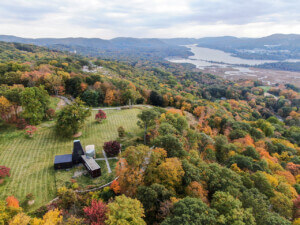Questions of environment, ecology, and climate have never more intensely occupied the cultural zeitgeist. According to editors Christophe Girot and Dora Imhof of the ETH Zurich, as scarcity, ruin, and a siege mentality drove the functionalism that dominated architecture of the post-war period, the profession of landscape architecture is still in the midst of responding to a decades-long environmental crisis, and has produced similarly functionalist design. They suggest (as Elizabeth Meyer has for years in her Sustaining Beauty writings) that recent landscape architectural production is too highly conditioned by analytics, abstracted from site, and producing works that don’t rise above functionalist responses to an environment in peril.
Thinking the Contemporary Landscape, a 17-essay collection, attempts to set up a discourse between opposing ideologies, such as science and memory, power and territory, fact and myth, in order to present an all-encompassing theory of contemporary landscape practice. While this endeavor ultimately frays, revealing the unlikelihood (or frankly, undesirability) of such unification, the book itself is a must-read for landscape architects and urbanists. The editors wittingly construct a discourse about a schism in modes of practice, a reaction perhaps to the dominance in recent years of landscape urbanism and its hybrids. Despite the foregrounding of an environment in peril, they react to scientific positivism by advocating for a return to aesthetics, poetics, myth, and meaning. The current volume suggests other new identities. If we are to believe Charles Waldheim, landscape architect equals urbanist. Waldheim and James Corner in particular are intent on fomenting this shift in perception; beseeching practitioners to take control of urban design territory (presumably, before the architects and urban planners beat them to it).
Girot’s essay laments the modes of visualization epitomized by the “layer-cake” approach of Ian McHarg, author of the 1969 Design with Nature. He suggests that years of design with 2-D maps and collage have effectively broken down landscape thinking into abstract, and ultimately, meaningless, layers. Girot argues that the results of this diagrammatic thinking have stripped design of character, of local connections, and ultimately, of meaning.
As a counterpoint, Corner argues for the preeminence of the plan, composite layers, and collage, suggesting they have the capacity to become “engendering machines” of “rich and unpredictable interactions,” a method that comes from ecology itself. Corner plays both ends of the spectrum, at once advocating for performance and form. In a mediated (and ultimately modest) position, Corner’s conception of “format” is hardly memorable. In the context of design reviews as long as six years ago, Corner declared that the University of Pennsylvania was about form and aesthetics, and Harvard was about performance. This dissonance of Corner’s recent commentary with his earlier writings manifests as some subconscious and uncoordinated id-war, a shift away from the working landscape and toward the “pictorial impulse” he earlier reviled (in New Operations and the Eidetic Landscape).
Recalling David Gissen’s Subnatures, Vittoria Di Palma’s intriguing discussion of aesthetics engages the wasteland as site of primal disgust and ultimately, subversive aesthetics. She revisits the picturesque and its power to give “a new prominence to aversive landscape,” (a topic explored by Robert Smithson in 1973’s Frederick Law Olmsted and the Dialectical Landscape), an apt aesthetic history to sample when theorizing the entropy, asymmetry, and gnarliness of the Anthropocene.
Other contributors reject the editors’ prompt of aesthetics altogether. Notably, Kongjian Yu, a practitioner of ecological design in China, argues powerfully for landschaft or the working landscape, suggesting that “the quality and beauty of the landscape has been detached from the notion of a holistic land system for living and survival, and has now become high art landscape design exclusively for the pleasure of the urban elite.” In a similar vein, Saskia Sassen’s critique eviscerates the blunt hand of capitalism that is currently playing out in the form of global land acquisition.
Rather than a clear way forward, the diversity of this volume evidences a fraught world in need of urban design leadership, solutions for the anxious environment of climate change, and rethinking the future of landscape’s territory and meaning in the 21st century.
Thinking The Contemporary Landscape
Christophe Girot, Dora Imhof, Princeton Architectural Press, $45










